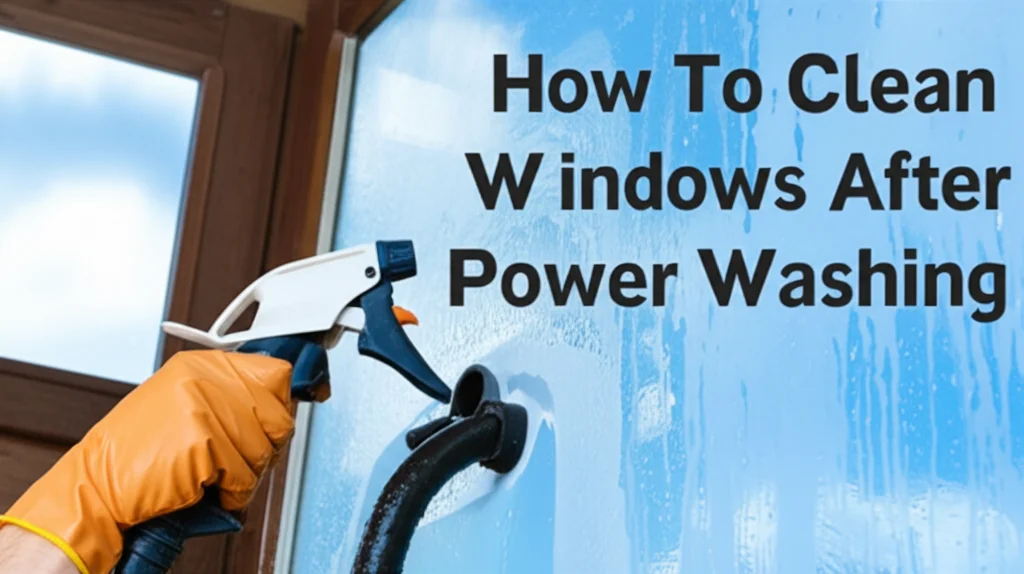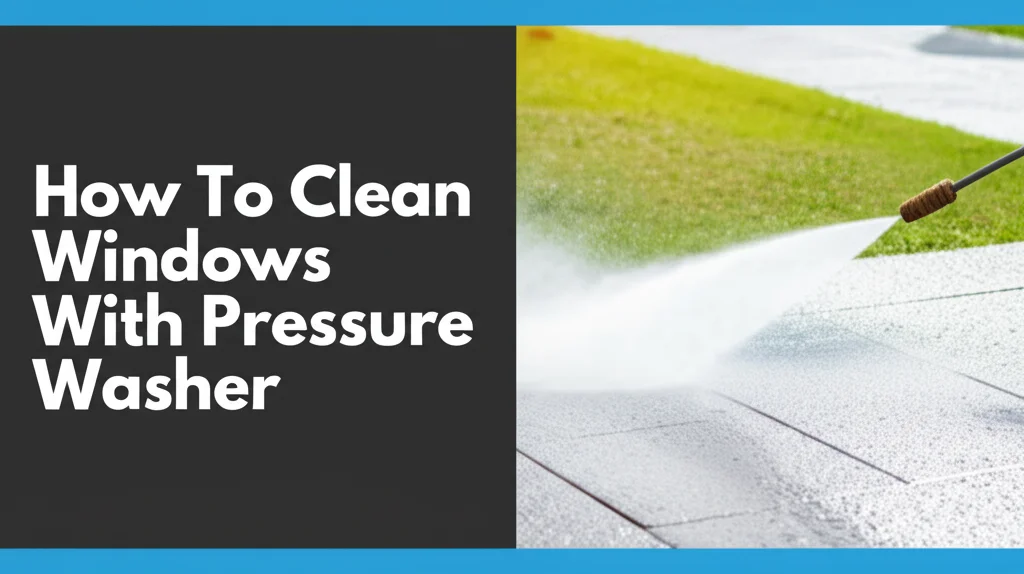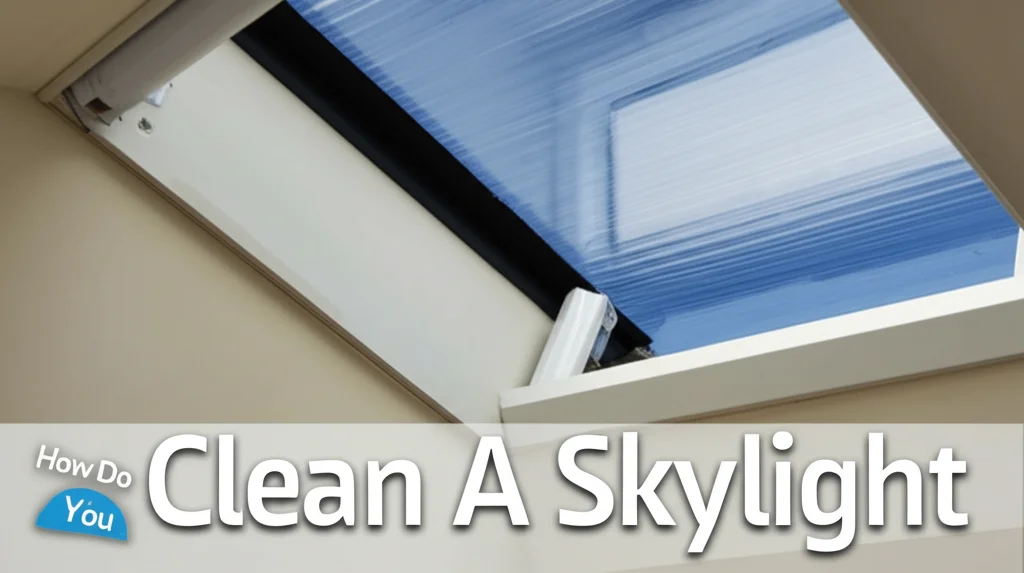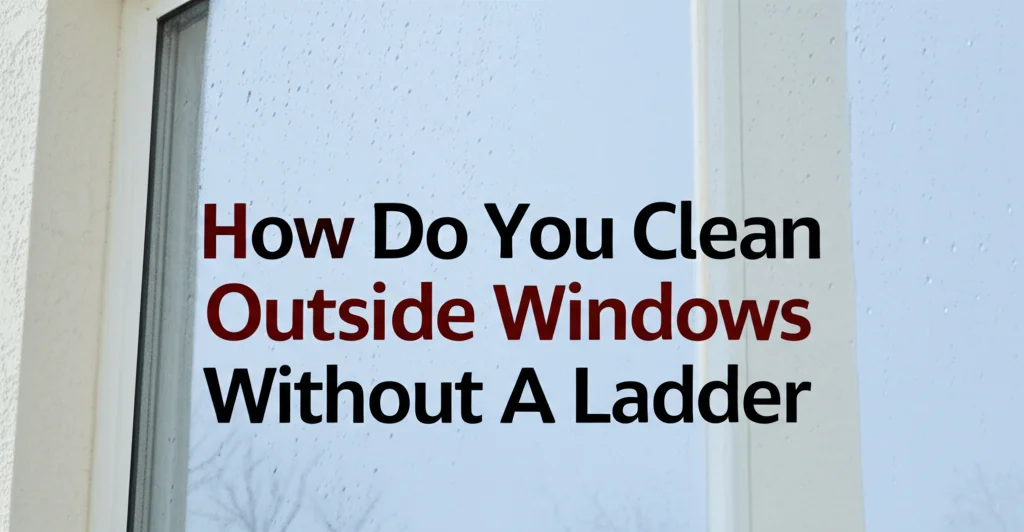· Home Cleaning · 7 min read
How To Clean Windows With Power Washer
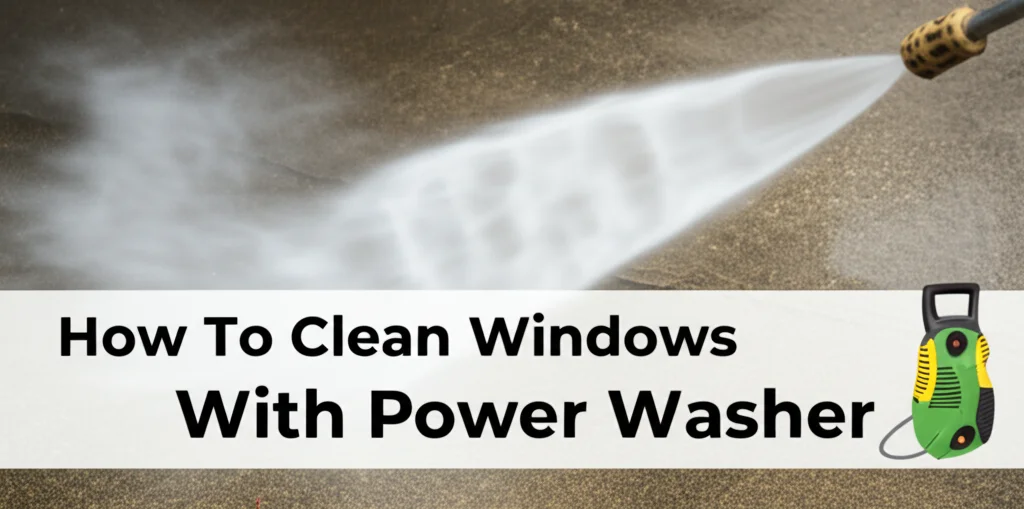
Sparkling Clean: How To Clean Windows With a Power Washer
Ever looked at your windows and wished for a quick, easy way to blast away dirt and grime? Using a power washer to clean windows might seem like a great idea, and it can be! But it’s not as simple as just pointing and spraying. This article will guide you through how to safely and effectively clean windows with a power washer, ensuring a streak-free shine without causing damage. We’ll cover everything from the right nozzle and pressure settings to essential safety precautions. Let’s get started and make your windows gleam!
Can you use a power washer to clean windows?
Yes, you can clean windows with a power washer, but it requires careful technique. Using the wrong pressure or nozzle can damage the glass or seals. A low-pressure setting and a wide-angle nozzle are crucial for safe and effective window cleaning.
Key Takeaways:
- Use a low-pressure setting (below 1200 PSI).
- Employ a wide-angle nozzle (40-degree or wider).
- Maintain a safe distance (at least 2 feet) from the glass.
- Always test a small, inconspicuous area first.
Why Use a Power Washer for Window Cleaning?
Traditional window cleaning can be time-consuming and physically demanding. Scrubbing, spraying, and wiping can take hours, especially for multiple or large windows. A power washer offers a faster, more efficient solution, particularly for exterior windows. It can quickly remove stubborn dirt, bird droppings, pollen, and other debris that accumulate over time. However, it’s important to remember that power washing isn’t a one-size-fits-all solution. It requires a delicate touch and the right equipment to avoid damage.
Understanding the Risks of Power Washing Windows
Before you start, it’s vital to understand the potential risks. High pressure can crack glass, especially if the glass is already weakened or has chips. It can also damage window seals, leading to leaks and energy loss. Furthermore, forcing water into window frames can cause mold and mildew growth. Using the wrong detergents can leave streaks or etch the glass. Therefore, careful preparation and technique are essential to mitigate these risks.
Choosing the Right Power Washer and Nozzles
Selecting the right equipment is the first step to successful window cleaning. Not all power washers are created equal. Electric power washers are generally better suited for window cleaning than gas-powered models, as they offer more precise pressure control. Gas power washers often deliver too much force.
Here’s a breakdown of nozzle choices:
- Wide-Angle Nozzle (40-degree or wider): This is your go-to nozzle for window cleaning. It distributes the water pressure over a larger area, reducing the risk of damage.
- Soap Nozzle: Use this nozzle to apply a window cleaning solution evenly.
- Avoid Narrow-Angle Nozzles (0-degree, 15-degree): These nozzles concentrate the pressure and are far too powerful for windows.
You can find a variety of power washers and nozzles online or at your local hardware store. Consider investing in a dedicated window cleaning attachment for even more precise control. If you’re unsure, consult with a professional at the store.
Preparing Your Windows for Power Washing
Proper preparation is key to achieving a clean, streak-free finish. Start by removing any loose debris, such as leaves, twigs, or cobwebs, from the window and surrounding area. Use a soft brush or broom to gently sweep away any visible dirt. Next, protect any nearby plants or delicate surfaces with plastic sheeting. This prevents them from being damaged by the spray. Finally, inspect the windows for any cracks or chips. Avoid power washing damaged windows, as this could worsen the problem.
The Step-by-Step Guide to Power Washing Windows
Now for the main event! Follow these steps for safe and effective window cleaning:
- Dilute Window Cleaning Solution: Mix a window cleaning solution with water according to the manufacturer’s instructions. A mild detergent specifically designed for windows is best.
- Apply the Solution: Attach the soap nozzle to your power washer and apply the cleaning solution to the windows. Start from the top and work your way down, ensuring even coverage.
- Let it Dwell: Allow the solution to dwell on the windows for a few minutes to loosen the dirt and grime. Don’t let it dry completely.
- Rinse with Low Pressure: Switch to the wide-angle nozzle and reduce the pressure to below 1200 PSI. Maintain a distance of at least 2 feet from the glass.
- Rinse from Top to Bottom: Rinse the windows from top to bottom, using a sweeping motion. Overlap each pass slightly to ensure complete coverage.
- Inspect and Repeat: Inspect the windows for any remaining dirt or streaks. If necessary, repeat the process.
- Dry the Windows: Allow the windows to air dry, or use a clean microfiber cloth to wipe them dry for a streak-free finish.
Remember to always test a small, inconspicuous area first to ensure the pressure and solution are not causing any damage.
Dealing with Stubborn Stains and Grime
Sometimes, a simple rinse isn’t enough to remove stubborn stains. For bird droppings, tree sap, or hard water spots, you may need to pre-treat the area. Apply a dedicated stain remover specifically designed for windows and let it dwell for the recommended time. Then, proceed with the power washing process as described above. For particularly tough grime, consider using a soft-bristled brush attachment with your power washer to gently scrub the area before rinsing.
If you’re dealing with mold or mildew, use a mold and mildew remover specifically formulated for exterior surfaces. Always follow the manufacturer’s instructions and wear appropriate safety gear. You can learn more about removing mold from painted walls here: https://www.beacleaner.com/how-to-remove-mold-from-painted-walls/.
Safety Precautions When Power Washing Windows
Safety should always be your top priority. Here are some essential precautions to follow:
- Wear Safety Glasses: Protect your eyes from flying debris and water spray.
- Wear Closed-Toe Shoes: Protect your feet from accidental slips and falls.
- Use a Ladder Safely: If you’re working on upper-story windows, use a sturdy ladder and follow all safety guidelines.
- Be Aware of Electrical Hazards: Keep the power washer away from electrical outlets and power lines.
- Never Point the Nozzle at People or Animals: The high-pressure spray can cause serious injury.
- Read the Power Washer Manual: Familiarize yourself with the specific safety instructions for your model.
Frequently Asked Questions (FAQs)
Q: What PSI should I use to power wash windows? A: Keep the pressure below 1200 PSI. Lower is better, especially for older or delicate windows. Start with the lowest setting and gradually increase it if needed.
Q: Can I use any detergent with my power washer for windows? A: No. Use a mild window cleaning solution specifically designed for power washers. Avoid harsh chemicals or abrasive cleaners.
Q: How far away should I hold the nozzle from the window? A: Maintain a distance of at least 2 feet. This helps to distribute the pressure and prevent damage.
Q: What if I notice cracks in my windows after power washing? A: Stop immediately and consult a professional window repair service. Power washing may have exacerbated existing weaknesses in the glass.
Q: Is it safe to power wash stained glass windows? A: No. Stained glass is very delicate and can be easily damaged by power washing. Use a gentle hand-cleaning method instead.
Q: Can I power wash screens? A: Yes, but use an even lower pressure setting and a wider nozzle than you would for the glass.
Conclusion: Enjoy Sparkling Windows with Confidence
Cleaning windows with a power washer can be a quick and effective way to restore their sparkle. However, it’s crucial to approach the task with caution and follow the guidelines outlined in this article. Remember to use a low-pressure setting, a wide-angle nozzle, and always test a small area first. By prioritizing safety and using the right techniques, you can enjoy clean, streak-free windows without risking damage. So, go ahead, grab your power washer, and give your windows the refresh they deserve! If you’re looking for other ways to keep your home sparkling, check out our guide on how to clean vinyl plank flooring: https://www.beacleaner.com/how-to-clean-vinyl-plank-flooring/.

